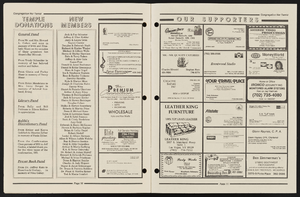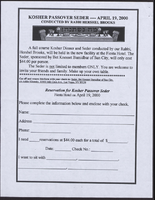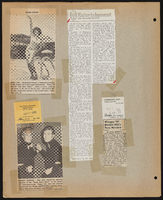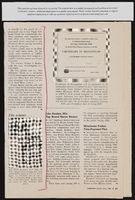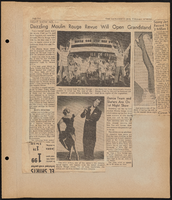Search the Special Collections and Archives Portal
Search Results

Map and basin profiles showing thickness of valley-fill deposits, Las Vegas Valley, Nevada, 1981
Date
Description
Image
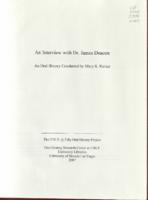
Transcript of interview with Dr. James Deacon by Mary K. Keiser, August 24, 2006
Date
Archival Collection
Description
Text

Transcript of interview with Mary Laub by Wendy Starkweather, December 02, 2013
Date
Archival Collection
Description
Text

Yazmin Beltran oral history interview: transcript
Date
Archival Collection
Description
Oral history interview with Yazmin Beltran conducted by Rodrigo Vazquez and Barbara Tabach on February 4, 2019 for the Latinx Voices of Southern Nevada Oral History Project. Beltran discusses her early life in Mexicali, Baja California, Mexico and her childhood and upbringing in Mexico. In 2003, at the age of eighteen, she and her mother joined the rest of her family in Las Vegas, Nevada. After attending College of Southern Nevada and taking English as a Second Language classes, Yazmin began to write as a Spanish contributor for a publication in Reno, and became a writer for Spanish publications in Las Vegas, including El Tiempo, El Mundo, and Univision. Beltran's work for Univision led her to Texas, where she covered events and crises including the 2018 child separation occurring at the United States border, which she discusses in the interview. Finally, Beltran talks about being a journalist for The Nevada Independent and the importance of continuing to report in Spanish.
Text
Arnold Shaw Papers
Identifier
Abstract
The Arnold Shaw papers (1927-2006) contain correspondence, newspaper articles, journal entries, promotional materials, and photographs. Shaw was a prolific writer and his papers also include articles, short stories, plays, and biographies written by him. In addition there are proofreader's notes, research material, and scratch copies for each of his fourteen books. The collection also contains papers from the various vocal groups and companies under contract with Shaw's music company, Mansion Music. Sheet music, some of which was written and produced by Shaw, assorted printed materials, and sound reels are also included.
Archival Collection

